Our Place at the Table: Honoring Birth Mother Stories
-
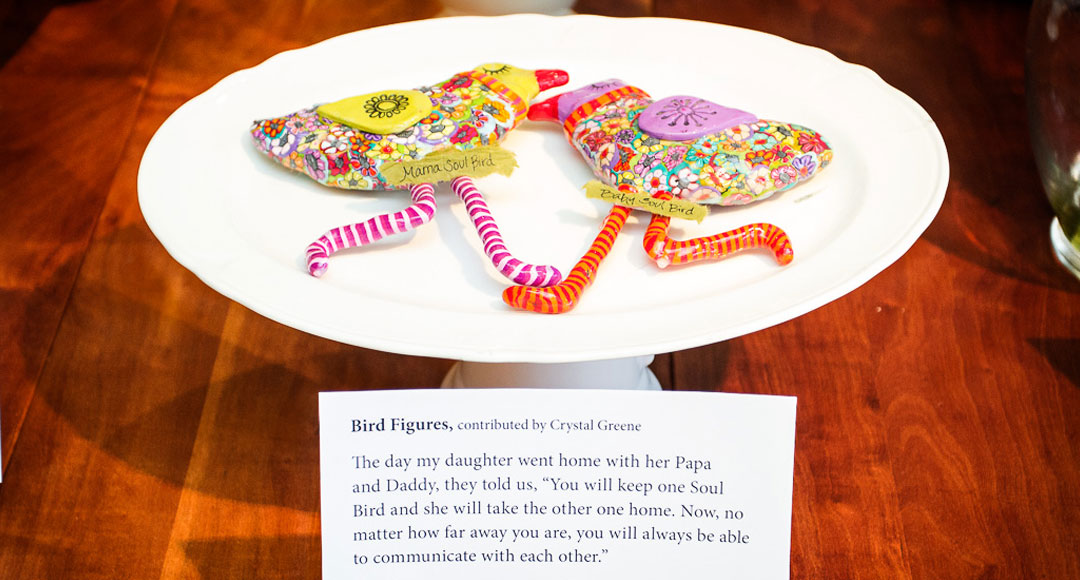 A first/birth mother's object and label describes a moment in her open adoption (photo: Indira Urrutia and Marc Hors)
A first/birth mother's object and label describes a moment in her open adoption (photo: Indira Urrutia and Marc Hors)
-
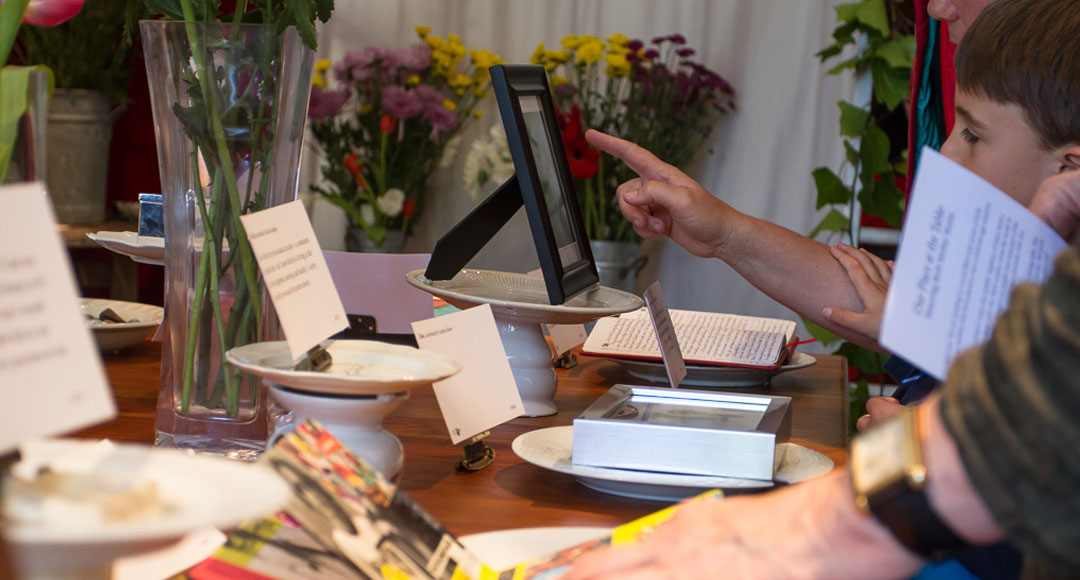 Many of the 18 objects, including a first/birth mother's journal for her daughter, could be touched (photo: Indira Urrutia and Marc Hors)
Many of the 18 objects, including a first/birth mother's journal for her daughter, could be touched (photo: Indira Urrutia and Marc Hors)
-
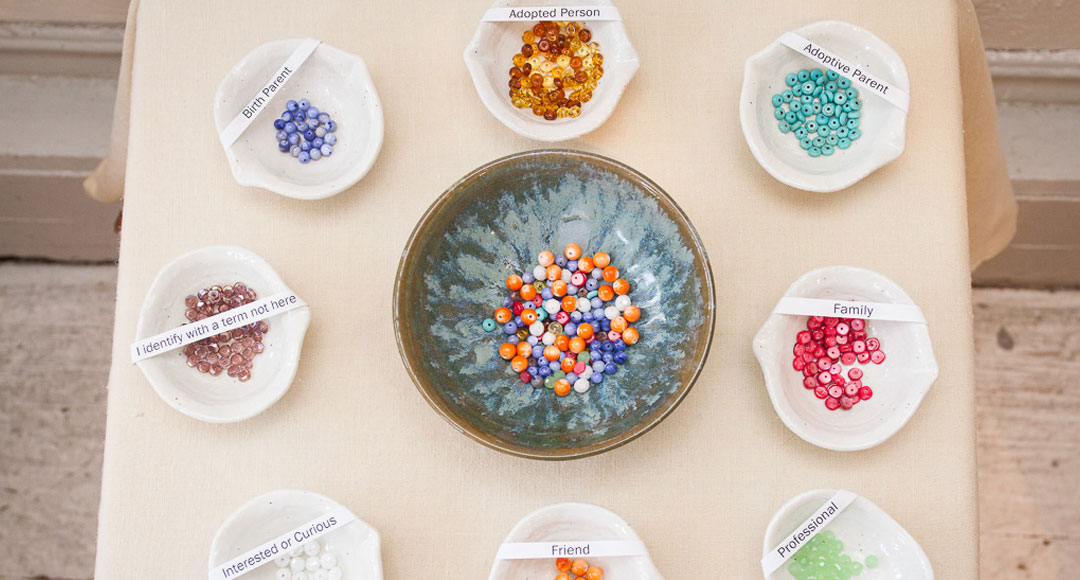 Visitors chose the beads that described them and placed them in the center bowl (photo: Indira Urrutia and Marc Hors)
Visitors chose the beads that described them and placed them in the center bowl (photo: Indira Urrutia and Marc Hors)
-
 A first/birth mother's hospital bracelet carries a false name and important memories (photo: Indira Urrutia and Marc Hors)
A first/birth mother's hospital bracelet carries a false name and important memories (photo: Indira Urrutia and Marc Hors)
-
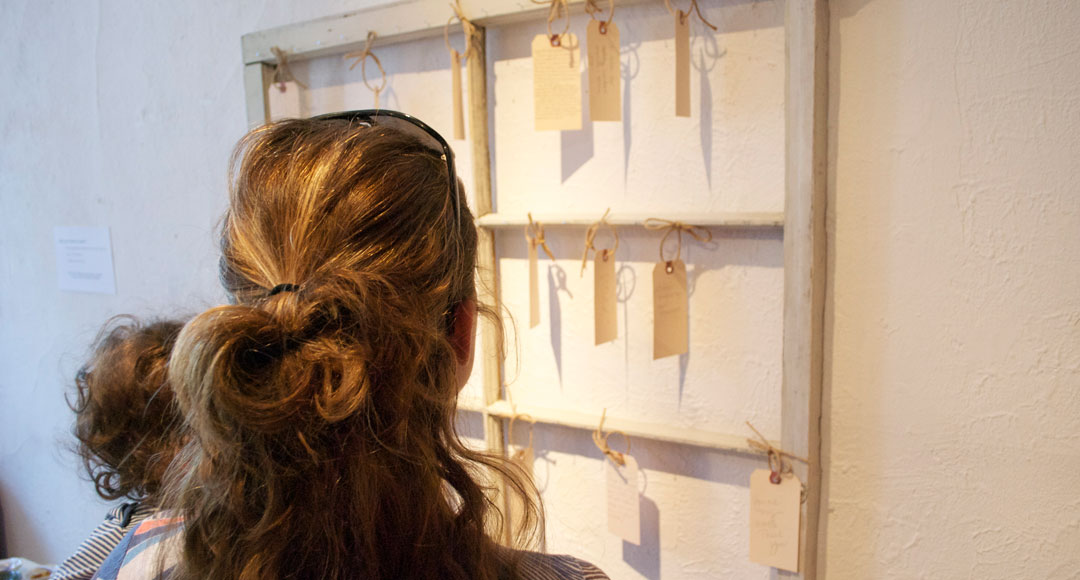 Visitors reflect on the wishes written for first/birth mothers (photo: Indira Urrutia and Marc Hors)
Visitors reflect on the wishes written for first/birth mothers (photo: Indira Urrutia and Marc Hors)
-
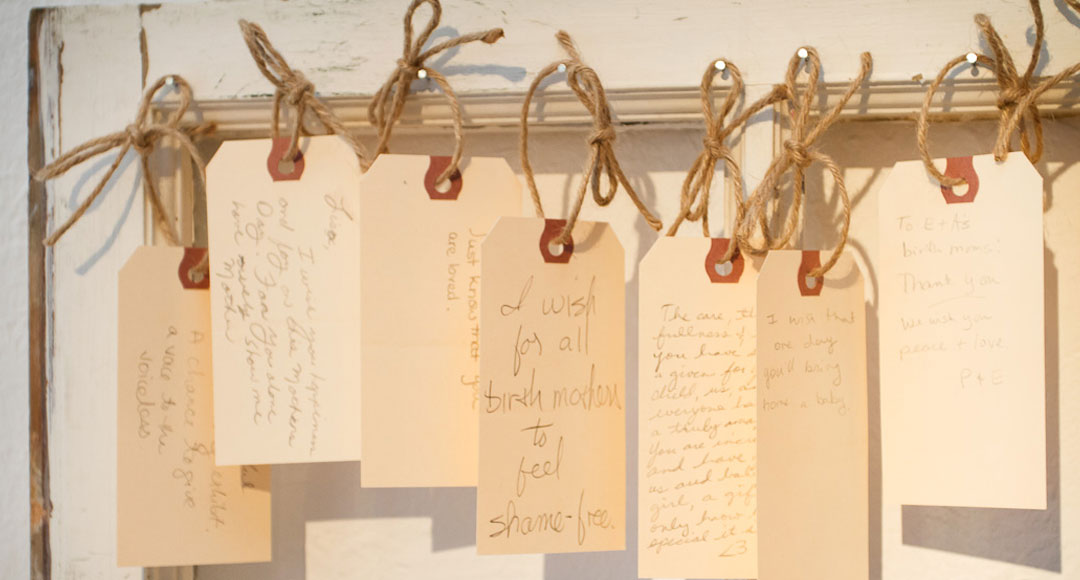 Visitors shared a wish for a first/birth mother they knew, or for all first/birth mothers (photo: Indira Urrutia and Marc Hors)
Visitors shared a wish for a first/birth mother they knew, or for all first/birth mothers (photo: Indira Urrutia and Marc Hors)
-
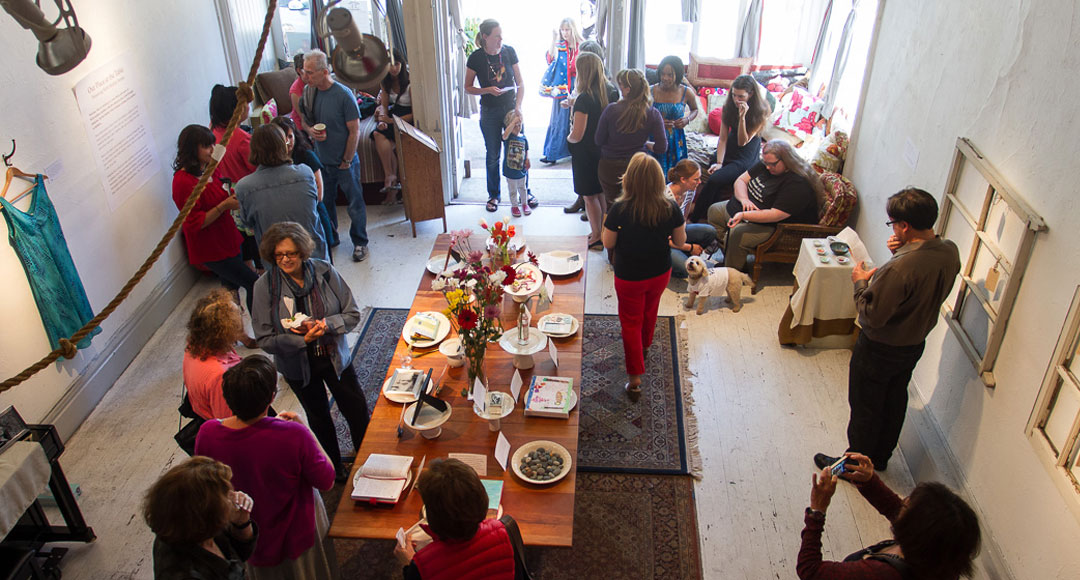 A diverse crowd experiences the exhibition at the Red Poppy Art House in San Francisco (photo: Indira Urrutia and Marc Hors)
A diverse crowd experiences the exhibition at the Red Poppy Art House in San Francisco (photo: Indira Urrutia and Marc Hors)
Adoption Museum Project’s first exhibition was an extraordinary one-day event. It brought first/birth mother experiences into public space. Working with 26 first/birth mothers, we developed an exhibition that shared diverse stories and invited visitors to contribute their own reflections. Following the exhibition, a literary program and solo performance offered more stories in different forms.
The Exhibition
A dining room table “set” with personal objects created an intimate and honest conversation about birth mother experiences. The stories were diverse. They ranged from traumatic, coerced relinquishment, to open adoptions that later closed, to adoptions that are working well. Visitors read this introduction when they entered the exhibition space:
“Welcome. You are standing in a room filled with stories of birth mothers: mothers who have placed or lost a child through adoption.
Many mothers helped create this exhibit. Eighteen of them chose a personal object to share with you. Each woman wrote the words on the object label. Together, they give an insight into some part of her experience. Other mothers have shared their portraits with you.
Most of the objects are arranged on a communal dining table. This is a place where we often reveal ourselves through stories. We invite you to listen to these birth mothers’ stories. Pull out a chair and take a seat, if you like.
The date on the object label is the year that each mother’s child was born. We recognize their children as well.
Adoption has evolved over time. There is more openness and acceptance now, more ways for birth mothers to feel they have agency and connection to their child. But even today birth mothers experience painful stereotypes, feelings of shame and isolation, and lack of access to a meaningful relationship with their child. Even today, some birth mothers feel that they were forced to surrender their children.
By being here, we bear witness to the experiences of a group of mothers. This is a powerful kind of honoring. It is how change begins.”
Visitors were invited to honor a birth mother in their life by placing a flower in vases on the table. Over the course of the exhibition the vases filled. Visitors could also write a wish for birth mothers and display it in the exhibition space.
Visitors could also identify their connection to adoption while remaining anonymous. Eight small bowls each held a differently colored bead representing a different connection to adoption. The bowl labels read: First/birth Mother, Adopted Person, Adoptive Parent, Family, Friend, Professional, Interested or Curious, and I Don’t Identify With a Term Here. Visitors could select whichever beads they identified with and place them in a center bowl. All connections were present in the space.
A resource sheet was available for visitors to take home, to support continued learning about birth mother experiences.
Read an article about the exhibition:
A Larger Conversation
In the days leading up to the exhibition, the Facebook event page unexpectedly became a discussion forum. Over 700 comments were posted. The commentary was wide-ranging, emotionally charged and complex. It began with criticism of the use of the term “birth mother” and concerns that the exhibition was advocating for women to place their children for adoption. Eventually, comments touched on larger social issues such as human and civil rights, reproductive justice, race and poverty. Many women who suffered severe mistreatment in the process of forced adoptions shared their experiences.
We stand against the part of the discourse that was disrespectful. And, many valid and important points were made. We highlight just two of them here for your consideration 1.) The term “Birthmother” is offensive to some women who have placed or lost children to adoption because it diminishes their role as a mother. 2.) Some people oppose adoption and work instead for family preservation.
Performance & Literary Event
Deanna Ross performed “Birthmother”, her powerful solo piece about her experience as a birth mother. Following that, ten writings by first/birth mothers were read aloud by three people holding identities of first/birth mother and adoptee. Authors submitted their poems and book excerpts for the evening.
Project Development
This was a highly collaborative project. Over 26 first/birth mothers helped shape this project. They provided conceptual input and contributed their stories through personal objects, object labels, writing, and performance. On Your Feet Foundation helped us reach out to first/birth mothers, contributed valuable guidance in working with that community and helped fund the project. Emma Thorne Christy designed the exhibition. Red Poppy Art House and Alley Cat Books shared their venues.
Special thanks: Susan Leksander, Diane Landino, Jenny Sindel, Indira Urrutria, Marc Hors, Todd Brown, Charlotte Saenz, Susan Ito, Ben Garcia, Ruth Ann Binder, Susan Greene, Rik Strange, David Callen, Fresh! White, Adriana Worley, Nanci Rider, Sharon Pazner, Rachel Knudson, Pamela Waxman and Jill Weinstein.
Our Involvement
Adoption Museum Project conceived of the project and led its development and presentation, working collaboratively with many others.
Date
May 11, 2013
Location
Red Poppy Art House
Alley Cat Books
San Francisco, CA
Community Partner
Exhibition Designer
 Nav Menu
Nav Menu